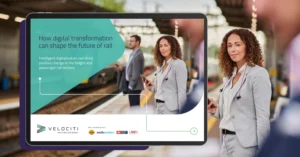The Department for Transport’s (DfT) report (published April 25), “Exploring connections between rail ticket type and journey purpose,” presents findings on how different ticket types are utilised across various journey purposes in England.
The research aimed to quantify the proportion of commuting, business, and leisure journeys associated with each rail ticket type and to understand how journey purpose influences ticket selection.
Key findings from the report included:
- Ticket type usage by journey purpose:
- Commuting: Traditional season tickets remain prevalent among regular commuters, though there’s a noticeable shift towards flexible options due to changing work patterns.
- Business: Business travellers often opt for Anytime and Off-Peak tickets, valuing flexibility to accommodate variable schedules.
- Leisure: Leisure travellers predominantly use Advance tickets, taking advantage of discounted fares for planned trips.
- Influence of journey purpose on ticket choice:
- The necessity for flexibility in travel dates and times significantly impacts ticket selection, especially for business and leisure purposes.
- Commuters with non-traditional work arrangements or variable schedules are increasingly adopting flexible ticket options to better align with their travel needs.
- Emerging trends:
- There’s a growing adoption of split ticketing practices, where passengers purchase multiple tickets for a single journey to reduce costs. This approach, while economically beneficial, introduces complexity and potential confusion among travellers.
- The introduction of flexible season tickets has provided commuters with more tailored options, reflecting the evolving nature of work and travel patterns post-pandemic.
- Geographical variations:
- Ticket usage patterns vary across different regions, influenced by local commuting habits, availability of services, and regional economic activities.
- Ticket usage patterns vary across different regions, influenced by local commuting habits, availability of services, and regional economic activities.
- Recommendations for policy and service improvement:
- Simplifying the fare structure could enhance user experience, particularly for occasional travellers who may find the current system opaque.
- Increasing awareness about available ticket options and their benefits can help passengers make informed choices, potentially leading to cost savings and improved satisfaction.
Understanding these patterns is crucial for policymakers and rail operators to optimise fare structures, improve service offerings, and align with the evolving needs of passengers in a post-pandemic travel landscape.
Read the full report on the DfT website: Exploring connections between rail ticket type and journey purpose.



